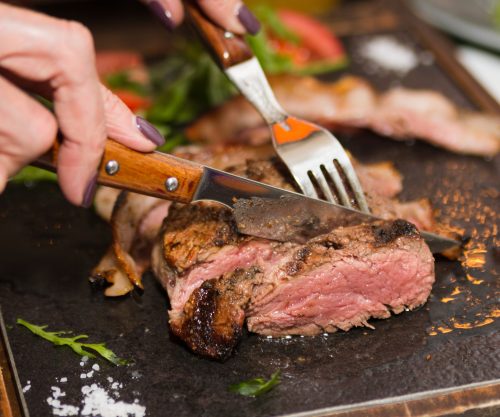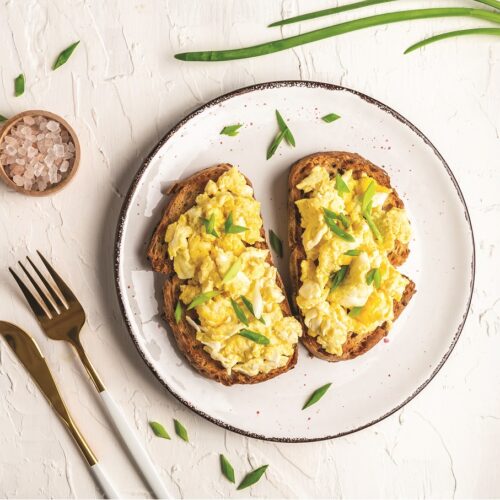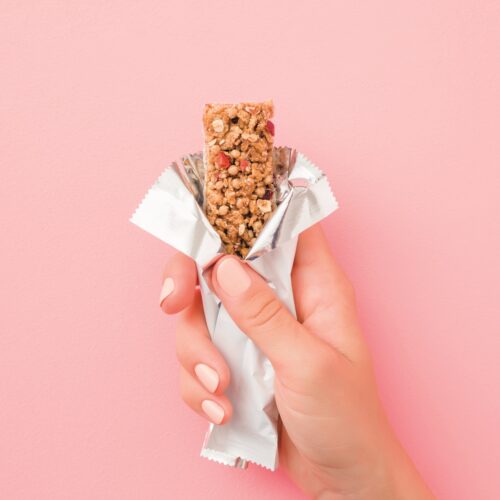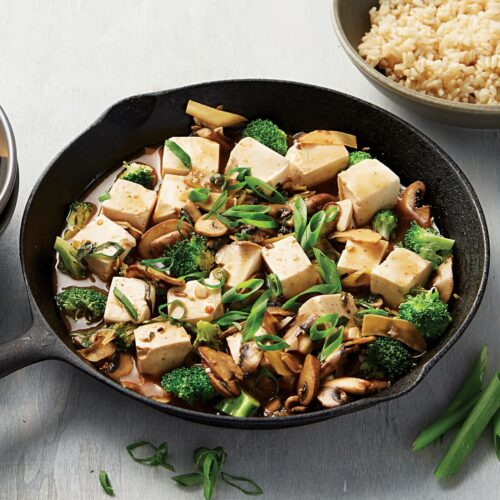
Different cuts of meat have different nutritional values, cooking requirements and costs. Here’s a handy guide to make choosing beef easier.
Nutrition
Not only is beef a great source of protein that can be easily and well used by the body, it’s also rich in iron, vitamin B12 and zinc. Visible fat can be trimmed, which reduces the amount of saturated fat.
How much meat is healthy to eat is a balance between maximising the benefits of such a high iron and protein food and minimising harm from the probable link between excessive red meat consumption and colorectal cancer risk. The recommendation from the World Cancer Research Fund is to eat no more than 500g cooked red meat each week (around 700g-750g raw). We recommend a serving of beef is around the size and thickness of the palm of your hand. That’s about 125g-150g raw weight. Additionally, the Australian Heart Foundation recommends limiting red meat consumption to just 350g a week, to be heart healthy.
What’s on the label?
Does it matter what kind of beef you choose to buy? The label descriptions may help with that decision:
Grass vs grain fed
Most New Zealand beef is grass fed rather than grain fed. Grass-fed beef is often lower in fat and higher in omega-3 fatty acids than grain-fed beef, making it a healthier choice. Some grass-fed beef is fed grain before slaughter.
Organic
Organic beef is from cattle that have been fed grass not treated with synthetic fertilisers or pesticides. Also, no hormones or antibiotics have been given to the cattle. Studies indicate organic beef may be lower in total fat and have a higher ratio of polyunsaturated fats than conventionally raised beef. For sources of information
Best cuts for:
Stir fry: Minute steak, stir-fry strips, scotch fillet, schnitzel, rump steak
Pan fry: Fillet steak, rib eye or scotch fillet, sirloin or porterhouse, t-bone, rump steak
Sunday roast: Sirloin, whole eye fillet, scotch fillet, standing rib, topside, whole rump, prime rib on bone
Slow cook, stew or casserole: Blade steak, brisket, diced beef, cross cut blade, oxtail, shin, chuck steak, corned silverside
Barbecue: Eye fillet, schnitzel, scotch fillet, sirloin
How to store and prepare beef
Store beef in the fridge (2°C to 4°C) or freezer (-15°C to -18°C or less) until it’s ready to be used. Freeze mince for 2-3 months, steaks for 3-4 months and roast beef cuts for 4-6 months. In the fridge, you can safely store mince for two days, steak for 2-3 days and uncooked roasts for 3-4 days.
Make sure the meat is well wrapped and placed on the lowest shelf in the fridge, so any leaked juices don’t come into contact with other foods. To prevent possible contamination with harmful bacteria, use a separate cutting board when preparing meat and don’t leave uncooked meat out of the fridge. If you are roasting your beef, see our guide to healthier roasts.
Buying beef
Try to choose lean cuts with little visible fat trim visible fat before cooking buy premium or prime mince lower-cost beef cuts are mince and cuts suitable for slow cooking look for the Quality Mark symbol store beef in the fridge or freezer for no longer than recommended times Premium, prime or regular mince Standard beef mince usually has about 10-20 per cent fat. Premium beef mince contains less than 5 per cent total fat and prime mince is less than 10 per cent fat.
Quality Mark
The Quality Mark logo from Beef + Lamb New Zealand is one way to identify high standards of animal welfare, quality, food safety and handling, as well as hormone-free guaranteed.
You may also be interested in:
Bought vs homemade beef burger
Ask the experts: Additives in beef
Try these delicious beef recipes:
Warm Moroccan beef and couscous salad
Teriyaki beef skewers with red cabbage salad
Thai beef chilli and basil stir fry
Article sources and references
- Reference Guide, beeflambnz. co.nz Accessed August 2018http://www.beeflambnz.co.nz/resources/Reference_Guide.pdf
- Daley CA et al. 2010. A review of fatty acid profiles and antioxidant content in grass-fed and grain-fed beef. Nutrition Journal 9:10https://nutritionj.biomedcentral.com/articles/10.1186/1475-2891-9-10
- World Cancer Research Fund & American Institute for Cancer Research. 2018. Diet, nutrition, physical activity and cancer: A global perspective. The third expert report, dietandcanerreport.org Accessed August 2018https://www.wcrf.org/dietandcancer/contents
www.healthyfood.com










